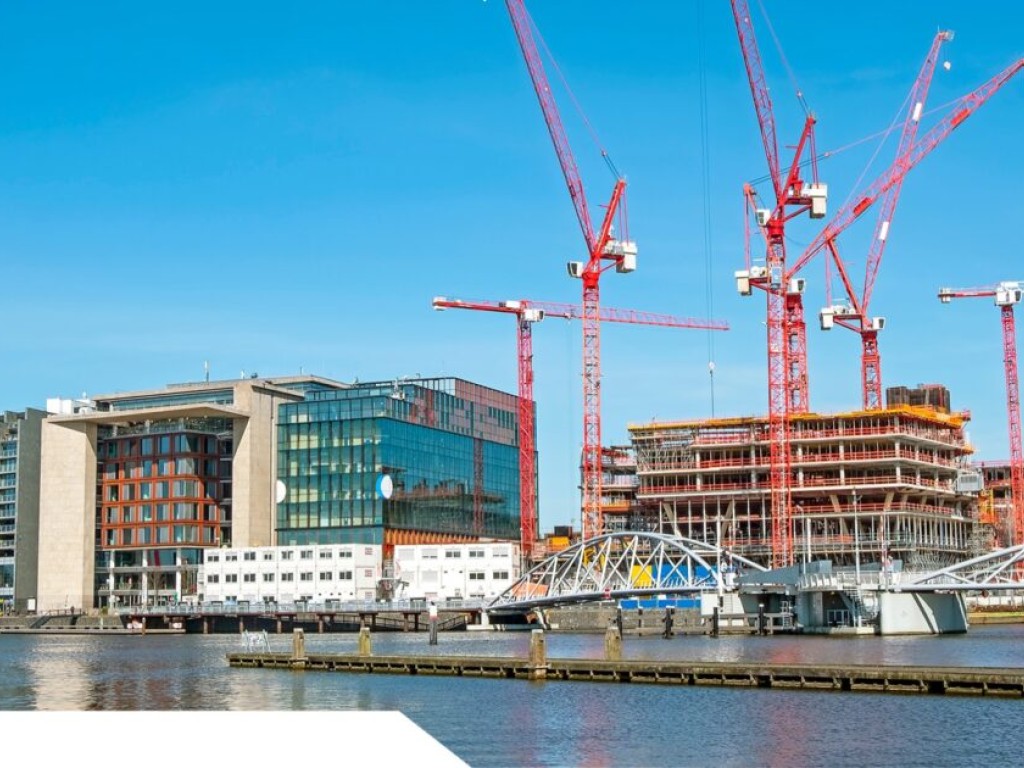SYNERCIZE: SYnchromodal Transport NEtworks for a Construction Industry towards Zero Emissions

De routekaart “Schoon en Emissieloos Bouwen” (SEB) stelt als doelstelling een 60% reductie in NOx, 0,4 miljoen ton reductie in CO2 en 75% minder gezondheidsschade in 2030, ten opzichte van 2017. Een belangrijke oorzaak van emissies in de bouwsector is logistiek. Hoewel synchromodale netwerken (het combineren van wegtransport met andere transportvormen) aanzienlijke voordelen laten zien in de reductie van kosten en emissies bij transport over lange afstand, wordt deze vorm van transport niet veel toegepast in de bouwsector, omdat de transporten meestal binnen de nationale grenzen blijven. Het hoge gewicht en de grote materiaalvolumes die kenmerkend zijn voor bouw en sloop maken transport over water een ideale kandidaat om emissies te verminderen, in lijn met de SEB-doelstellingen.
Het SYNERCIZE project streeft naar een duurzame, langdurige verschuiving naar emissieloze binnenlandse waterwegen door middel van vier use cases in het Blue Lane living lab. We bereiken dit doel door ons te concentreren op vier aspecten. Ten eerste ontwerpen we een flexibel transportnetwerk als ruggengraat voor transport van bouw- en sloopmaterialen over middellange en lange afstand binnen Nederland. De flexibiliteit van het netwerk wordt zichtbaar in verschillende dimensies, waaronder aanpasbaarheid op basis van de doelen (tijd, kosten, emissies). Ten tweede vereist het operationaliseren en aansturen van het transportnetwerk intelligente routeringsalgoritmen. De algoritmen zijn gericht op flexibele planning voor binnenvaartschepen tussen synchromodale hubs en voor de inzet van vrachtwagens voor het benodigde voortransport en natransport. Ten derde moeten deze algoritmen worden ondersteund door hoogwaardige data om te kunnen reageren op voortdurend veranderende vraagpatronen, vertragingen en afwegingen in doelstellingen. Ook is hoogwaardige data nodig voor de operationele coördinatie. Daarom ontwikkelen we digitale tools om data te verzamelen, visualiseren en analyseren om naadloze integratie van het synchromodale transport mogelijk te maken. Gegeven de gesegmenteerde aard van zowel de bouw als de logistieke sector is het belangrijk de intelligente algoritmen uittebreiden ter ondersteuning van gedecentraliseerde beslisprocessen om hiermee effectief routes en ondersteunende diensten te plannen via scenarioanalyses. De fundamentele verandering in de bestaande werkwijzen zal verschillende rollen en functies binnen de supply chain beïnvloeden. Daarom ontwikkelen we innovatieve bedrijfsmodellen voor de stakeholders, en daarbij behorende nieuwe coördinatiemechanismen.
Als resultaat stellen we een visie voor om synchromodaal transport in de bouwlogistiek tot een succes te maken. Naast het netwerkontwerp, intelligente routeringsalgoritmen en coördinatiemechanismen voor gedecentraliseerde operaties op dit netwerk, en digitale tools voor het verzamelen van gegevens, zal SYNERCIZE (i) inzicht verschaffen in de huidige situatie van synchromodale bouw- en slooplogistiek, waarbij obstakels en kansen worden geïdentificeerd, (ii) een holistische benadering ontwerpen om emissies in bouw- en slooplogistiek te verminderen via synchromodale logistieke stromen, en (iii) best practices ontwikkelen voor de overgang naar synchromodale bouw- en logistieke diensten. Ons consortium bestaat uit drie kennisinstituten, negen niet-academische partners (bedrijven, provincies, gemeenten en stichtingen). De academische partners zijn experts in de vereiste vakgebieden, en de niet-academische partners bieden de ideale setting voor een living lab omgeving waarin we onze onderzoeksactiviteiten testen en implementeren middels vier use-cases: grootschalige aanleg van infrastructuur, gebiedsontwikkeling, circulaire sloopprojecten, en bouwhubs en netwerken. Door de matrixachtige integratie van de use cases en werkpakketten wordt de toetsing aan de werkelijkheid altijd meegenomen in de specificering van de onderzoeksvragen en wordt al het onderzoek direct gevalideerd in het living lab. We verwachten een reductie van 50% in CO2 en een 46% in NOx in logistieke stromen voor bouw en sloop als gevolg van SYNERCIZE. Het verschepen over water i.p.v. wegen heeft ook impact op leefbaarheid met minder verkeer en vervuiling. Valorisatie, disseminatie en implementatie is een integraal onderdeel van het SYNERCIZE project: Projectpartner ESCF richt zich exclusief op valorisatie en disseminatie activiteiten, en een living lab coördinator (MHS) verbindt onderzoek met praktische implementatie. We organiseren onder andere meerdere workshops voor logistieke en bouwprofessionals binnen en buiten het project, betrekken studenten in dit project via studievakken en afstudeeropdrachten, en bereiken een breder publiek via video’s, nieuwsbrieven en de projectwebsite.